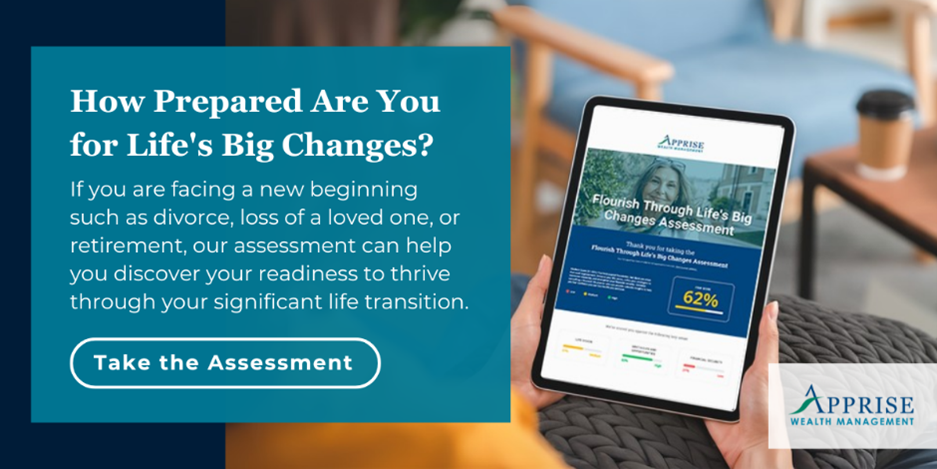Key Takeaways from the One Big Beautiful Bill Act (OBBBA)
On July 4, President Trump signed the “One Big Beautiful Bill Act” (OBBBA). It contains numerous provisions that could have a significant impact on investors’ and retirees’ planning under the new 2025 tax law.
With the passage of the OBBBA, the federal government has provided long-sought consistency in tax policy. The sprawling bill has numerous components and areas of impact, making it worthwhile to examine how it may affect different categories of investors.
In many cases, the legislation makes permanent several key changes from 2017 that were set to expire by the end of the year. If these provisions had expired, taxes would have increased, and planning under the new 2025 tax law would have been more difficult and uncertain.
The text below mentions both Adjusted Gross Income (AGI) and Modified Adjusted Gross Income (MAGI). Your AGI is essentially your gross income (your taxable income from all sources) minus certain specific deductions, also known as “above-the-line” deductions or adjustments to income. Your MAGI is your AGI plus certain previously excluded items, depending on the credit or deduction being calculated. As noted near the end of this blog, some new deductions under the OBBBA do not reduce AGI.
Below is a summary of some of the most impactful changes introduced by the new 2025 tax law. Some of these changes are permanent. Others are temporary.
NEW 2025 TAX LAW—INCOME TAX CHANGES
- Lower Tax Brackets: The lower tax brackets, first introduced as part of the Tax Cuts and Jobs Act of 2017 (TCJA), were made permanent. As a result, the top marginal income tax rate (the rate of tax paid on your last dollar of income) will remain at 37%. All brackets continue to be indexed for inflation after 2025.
- Social Security Taxation: There were no broad cuts to the Social Security taxation. The amount of Social Security income subject to income tax will remain unchanged. Please see the following table for details. These thresholds were first established in 1983 without ever being indexed for inflation. The lack of any inflation adjustment continues to erode the value of these thresholds, causing an increasing number of retirees to pay tax on their Social Security benefits over time.
Federal income taxation of Social Security benefits
| Filing Status | Combined Income | Taxable Portion of Benefits |
| Individual | $25,000 or less | None |
| Individual | $25,000 to $34,000 | Up to 50% |
| Individual | More than $34,000 | Up to 85% |
| Married Filing Jointly | $32,000 or less | None |
| Married Filing Jointly | $32,000 to $44,000 | Up to 50% |
| Married Filing Jointly | More than $44,000 | Up to 85% |
| Married Filing Separately | Lived with spouse anytime during the year | Up to 85% |
To learn more about the taxation of Social Security as well as the Social Security Tax Torpedo, please read “The Social Security Tax Torpedo—Could It Happen to You?”.
- Alternative Minimum Tax (AMT): The adjustment to AMT helps prevent millions of filers from being subject to AMT in 2026 and beyond. The AMT exemption was permanently increased. In 2017, the exemption amounts were temporarily raised. The income phase-out thresholds for the AMT exemption are reset to the 2018 levels of $500,000 for single filers and $1 million for joint filers, with these thresholds also subject to inflation adjustments. As a result, the exemption begins phasing out at lower income levels compared to what it was in the later years of the TCJA. The rate at which the AMT exemption phases out increases from 25 cents to 50 cents for every dollar of AMT income exceeding the phase-out threshold.
NEW 2025 TAX LAW—DEDUCTIONS AND CREDITS
- Standard Deduction: The higher standard deduction established as part of the TCJA remains in place. Additionally, it received a slightly larger-than-expected increase. The standard deduction will be $31,500 for married couples, $15,750 for single filers, and $23,625 for those filing as head of household for the 2025 tax year. Taxpayers who are 65 and older will receive an additional deduction of $2,000. The standard deduction for couples who are both 65 or older will be $3,200. These amounts will be indexed for inflation. The new bill also establishes a 35% cap on the value of itemized deductions, beginning in 2026. If you are in the 37% tax bracket, you will now only receive a 35% tax benefit for your itemized deductions.
- Personal Exemptions: Personal exemptions, which were suspended for 2018-2025, have been permanently terminated. As a result, you do not get an additional tax exemption for dependents.
- Senior Deduction: A new senior bonus deduction of $6,000 is available for all individuals aged 65 or older. Accordingly, couples will get a $12,000 senior bonus deduction. This deduction phases out beginning at $75,000 of income for individuals and $150,000 for married couples filing jointly. This deduction phases out at 6 cents for every dollar above the income threshold, meaning that it disappears entirely for individuals whose Modified Adjusted Gross Income equals or exceeds $175,000. This figure is $250,000 for those with a married filing jointly status. This deduction expires after the 2028 tax year.
- State and Local Income Tax Deduction: Previously, the deduction for State and Local Income Taxes (SALT), which includes state income and property taxes, was limited to $10,000. This figure increases to $40,000 for married couples, heads of households, and singles. The limit falls to $20,000 for married couples filing separately. This deduction is set to expire after 2029, when it will revert to the prior $10,000 limit for all filing statuses. For those exceeding $500,000 of Modified Adjusted Gross Income (MAGI), the deduction will phase out at a rate of 30% of the excess MAGI. (See above for definitions of MAGI and AGI.) The SALT deduction will not be less than $10,000. The increased deduction will phase out completely for those with an annual income of $633,333 or more. The $40,000 cap and the $500,000 income threshold will increase by 1% annually from 2026 through 2029. After this provision’s sunset, the SALT cap on deductions will revert to $10,000.
- Mortgage Interest Deduction: There were no changes to the rules related to the deductibility of mortgage interest. It remains capped at $750,000 in loan principal value.
- Charitable Contributions: A new deduction for cash contributions to qualified charities was adopted effective with the 2026 tax year. It allows single taxpayers to deduct up to $1,000, and married couples filing jointly who do not itemize their deductions to deduct up to $2,000. Those who itemize may now deduct charitable contributions only to the extent they exceed 0.5% of adjusted gross income (AGI), effective for tax years beginning after December 31, 2025. If you have a lost deduction in any year, you can carry it forward and potentially use it in future years. The temporary 60% of AGI limit for cash gifts to public charities, previously set to expire at the end of 2025, has been made permanent. Under the OBBBA, contributions to donor-advised funds are only deductible if you itemize.
- Auto Loan Interest: A new temporary tax deduction is available for interest paid on loans for new, qualified passenger vehicles assembled in the US. This deduction is available for purchases made from 2025 through 2028. It allows taxpayers to deduct up to $10,000 annually in interest. However, this amount gets reduced for taxpayers with income exceeding certain thresholds. The MAGI cap is $200,000 ($100,000 for singles). The deduction is reduced by $200 for every $1,000 of income above those levels.
2025 TAX LAW CHANGES—RETIREMENT AND ESTATE
- Estate and gift tax exemption: The estate and gift tax exemption, which is $13.99 million in 2025, will increase to $15 million in 2026. Previously, the exemption was to revert to prior law, which was $5.45 million in 2016. After considering inflation, the amount would likely have dropped to about $7 million without this law change. The increase to $15 million is permanent. It will also be indexed for inflation.
- Tax-Favored Accounts for Children: The OBBBA permits the establishment of new tax-favored accounts specifically for children under the age of 18. These accounts are new and separate from traditional 529 accounts. The annual contribution limit for such accounts is $5,000 indexed for inflation. Contributions can be made by parents, other taxable entities, and even employers (up to $2,500 per employee). The amount does not count as income for the child. The federal government will provide a one-time credit of $1,000 for US children born between 2025 and 2028. These accounts can grow tax-deferred. Contributions made before a child reaches age 18 are not tax-deductible. Distributions are generally prohibited until the child reaches age 18. After age 18, the account functions like a traditional IRA.
These accounts offer some benefits, such as a lower contribution limit and the potential for a federal contribution, but they lack the upfront tax deduction of a traditional IRA and the tax-free withdrawals of a Roth IRA, notes the Purdue Exponent.
For most taxpayers, Roth IRAs and 529 accounts may still be more advantageous due to better tax savings and higher contribution limits.
It’s essential to carefully consider your child’s income, your financial goals, and the potential tax implications before choosing the best savings vehicle. Consulting with a financial advisor can help you make an informed decision.
2025 TAX LAW CHANGES—FAMILY AND EDUCATION
- Child tax credit:Permanently extends the increased child tax credit. The nonrefundable child tax credit increases to $2,200 per child, beginning in tax year 2025, and is indexed for inflation.
- 529 plan qualified expenses: Taxpayers can now use tax-advantaged 529 accounts to cover a wider array of qualified educational expenses, including some trade credential programs and more K-12 costs, such as books, online materials, and tutoring fees. Additionally, starting in 2026, the annual limit for K-12 expenses will increase to $20,000 (up from $10,000). Tax-advantaged treatment applies to savings used for qualified education expenses. State tax treatment varies.
NEW 2025 TAX LAW—BUSINESS & ENERGY
- Employer payment of student loans: The maximum exclusion of $5,250, which included employer payment of qualified student loan payments, was set to expire after 2025. This provision has been made permanent. It will also be adjusted for inflation.
- Qualified Business Income (QBI) deduction: The QBI deduction was previously set to expire after 2025. The OBBBA made it permanent. The phase-in ranges for the limitations based on W-2 wages, qualified property, and the exclusion for specified service trades or businesses (SSTBs) have been increased. The range for single filers is now $75,000 (up from $50,000), and for joint filers, it’s $150,000 (up from $100,000). The upper end of the phaseout range also increased.
A new minimum $400 deduction (indexed for inflation) is available to those with at least $1,000 of QBI from an active trade or business in which they materially participate. As a result, owners of pass-through entities (like sole proprietorships, partnerships, and S corporations) can continue to deduct up to 20% of their qualified business income for the foreseeable future. The increased phase-in limits and the introduction of a minimum deduction could potentially allow more businesses to benefit from this tax break or claim a larger deduction than before.
- Green Energy Provisions: Several of these will end early under the new law. Taxpayers who want tax credits on new or previously owned “clean” vehicles must now place them in service by September 30, 2025, not the end of 2032. The deadline for qualifying for the energy-efficient home improvement credit has been accelerated to December 31, 2025, from the previously scheduled end of 2032. Similarly, the deadline for qualifying for the residential clean energy credit is now December 31, 2025, not the end of 2034. These changes significantly shorten the window for claiming clean energy tax credits compared to previous legislation. As a result, updated planning may be necessary for those considering energy-related investments or home improvements.
FINANCIAL PLANNING IMPLICATIONS OF THE NEW 2025 TAX LAW
With the permanence provided by the new 2025 tax law, advisors can now implement strategies such as the following with greater confidence:
Additionally, the increase to the SALT cap could benefit high-income clients in high-tax states.
If you do not currently itemize your deductions, you may now be able to deduct some amount of charitable deductions moving forward. Please remember to consider these deductions when exploring tax-planning opportunities.
Remember to consider the phaseouts of provisions like the SALT deduction, the senior deduction, and the limitations on charitable contributions when itemizing deductions under the 2025 tax law or contemplating strategies such as Roth conversions and the sale of a business.
Unlike contributions to 401(k)s and health savings accounts, the senior deduction, auto-loan interest, tips, and overtime deductions do not reduce AGI. Please note that we did not include the new rules related to tips and overtime income, as they generally do not apply to Apprise’s clients and prospects.
A GOOD TIME TO REVIEW YOUR PLAN
Whenever the tax landscape changes, it’s important to work with your financial professionals to ensure you understand how you may be affected and what—if any—changes you should consider. While you should continue to base your wealth planning on long-term objectives, now is the time to assess how the new 2025 tax law could influence your financial future. Please schedule a call to discuss the OBBA and your tax situation.
Our practice continues to benefit from referrals from our clients and friends. Thank you for your trust and confidence.
If you would like to discuss financial topics, such as navigating new beginnings, managing investments, creating a life plan, or saving for retirement, please complete our contact form or schedule a call or virtual meeting via Zoom. We will be in touch.
Follow us:
Please note. We post information about articles that can help you make better money-related decisions on LinkedIn and Facebook.
For firm disclosures, see here: https://apprisewealth.com/disclosures/





